What’s the Best Time of Day to Do Laundry? The Environmental Impact of Dirty Clothes
5 minute read
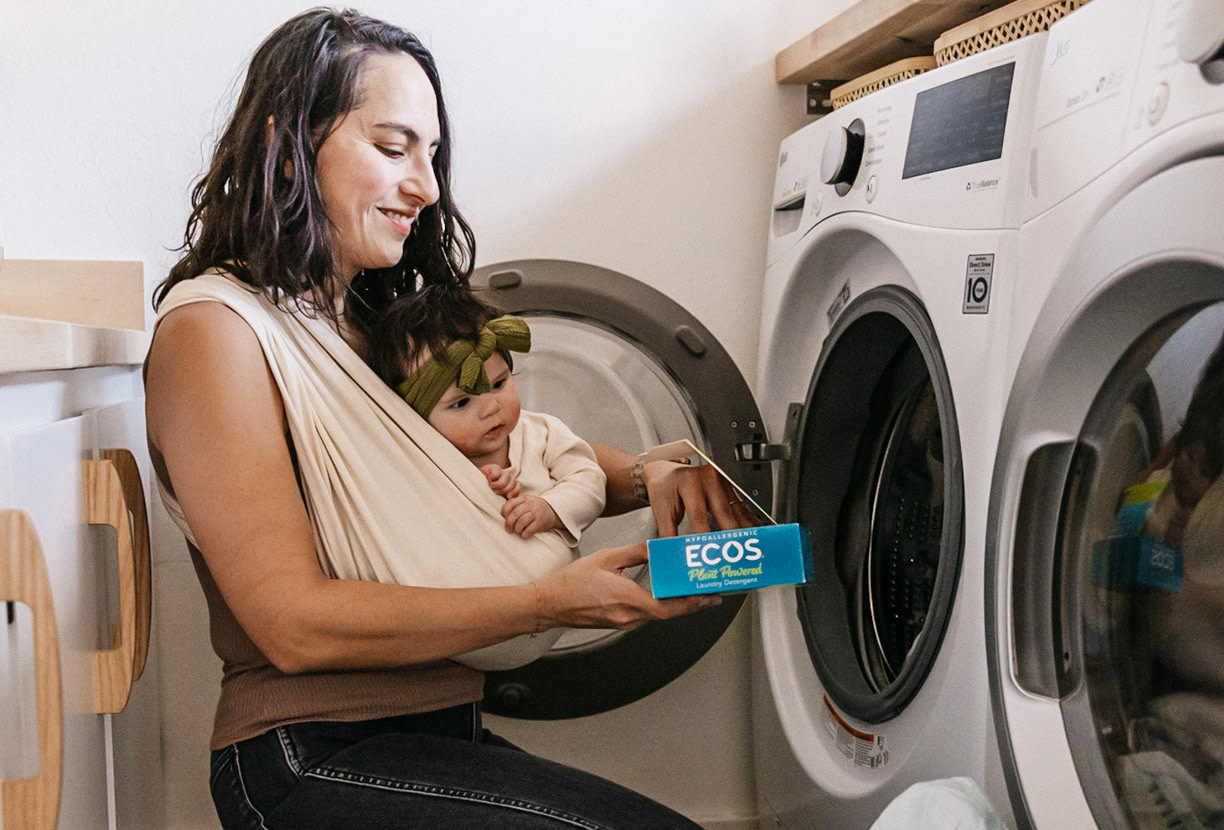
When we think about the world’s biggest environmental challenges, we often picture factory smokestacks, traffic jams, or wildfires. But everyday actions—those small choices we make at home—also play a meaningful role in our global footprint. One of those actions? Doing laundry… or letting it pile up.
In the U.S., the average household runs nearly 300 loads of laundry per year. Multiply that by millions of homes across the country, and the impact adds up fast. Energy, water, and laundry products all flow through each wash—and together they leave a significant mark. Surprisingly, dirty laundry itself can also contribute to environmental stress, especially when left unwashed for too long.
And while laundry is part of our daily routines, the time of day we choose to wash clothes can directly influence energy use and, in turn, our environmental impact. Another factor? How long we let dirty clothes sit before doing a load—because the longer we wait, the more water, energy, and detergent we may need to get them truly clean.
The Hidden Impact of Dirty Laundry
When we let sweaty or stained clothes sit in the hamper too long, they become tougher to clean. Over time, odors and dirt sink deeper into the fabric. This often means longer wash cycles, more detergent, warmer water, and extra soaking or pre-treatment—all of which use more resources.
In homes powered by fossil fuels, that also means higher emissions. And in humid conditions, some fabrics may begin shedding microfibers before even hitting the washer. These tiny particles can enter water systems and contribute to aquatic pollution.
In a world where freshwater is increasingly limited and the climate crisis continues to intensify, reevaluating everyday habits—like when and how we do laundry—can be a powerful way to make a difference.
Tip: Don’t wait too long between loads. Washing full (but not overloaded) loads regularly helps avoid deep-set stains and odors. It also helps reduce water, energy, and detergent use.
What’s the Best Time to Do Laundry?
1. Off-Peak Energy Hours
The time of day you wash your clothes can make a real difference. Power plants don’t always produce electricity in the same way—and the environmental cost can vary. During peak hours—usually between 6 p.m. and 10 p.m.—demand on the power grid is high, which often leads to increased reliance on less efficient energy sources.
In many parts of the U.S., electricity is cleaner and more efficiently distributed during off-peak hours. That means washing early in the morning (before 10 a.m.) or later at night (after 8 p.m.) can ease pressure on the grid and help reduce the emissions linked to your laundry routine. It might even save you money if your utility provider offers time-of-use pricing.
Pro tip: Check with your local utility to see if they offer off-peak rates. Many regions reward households that shift energy use to non-peak times.
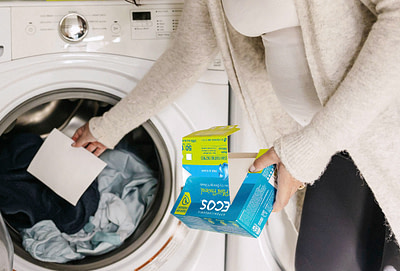
2. Check the Forecast if You Air-Dry
If you prefer to air-dry your clothes (which is a great energy saver), aim for midday. Sunshine and a bit of breeze can speed up the drying process and help you skip the dryer altogether.
A Daily Habit with Global Reach
We know that the clothing industry has a large environmental footprint—from raw material extraction to manufacturing, shipping, and disposal. But that footprint doesn’t end once your clothes reach your closet. Every wash matters.
At ECOS, we design our laundry products with high-performance, formulas made with several plant-derived ingredients. These formulations are optimized for cold water washes—helping reduce energy use without sacrificing results. Plus, our US manufacturing facilities run on 100% renewable electricity.
What Kind of Laundry Products Do You Use?
Your choice of laundry detergent also plays a key role. Choosing ECOS is an easy way to care for your clothes, your home, and the planet—all at once. Our products are created to deliver powerful results, even in cold water cycles, so you can lower energy use and still get a deep, effective clean.
Powered by a base of plant-derived ingredients and advanced enzyme technology, ECOS products tackle tough stains and odors while treating your fabrics gently.
ECOS Laundry Solutions for Every Routine
ECOS® – Hypoallergenic Laundry Detergent
Our most popular liquid detergent. Packed with cleaning power and several plant-derived ingredients, it comes in a recyclable plastic bottle and works great in cold water. Perfect for everyday use.
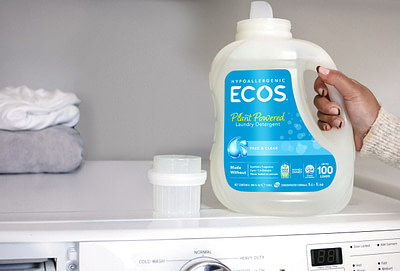
ECOS® Laundry Detergent Sheets
Lightweight, mess-free, and travel-friendly. These sheets dissolve easily in cold water and deliver strong cleaning in a space-saving format—ideal for small homes or life on the go.
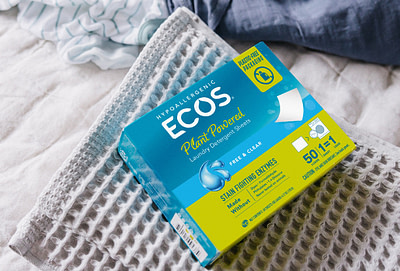
ECOS® Laundry Detergent Packs
Pre-measured pods packs offer powerful convenience. Each one delivers the right amount of detergent to handle stains and odors in shorter, efficient wash cycles.
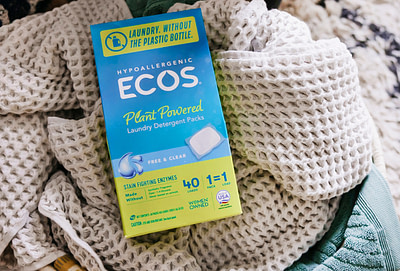
ECOS® Liquid Laundry Detergent – Ultra Concentrated (Aluminum Bottle)
High performance in a compact package. This ultra-concentrated formula comes in a durable, refillable aluminum bottle—designed to help reduce packaging waste while delivering strong results with less product.
Whether you prefer packs, sheets, classic liquids, or concentrated options, ECOS has a solution that fits your routine—and supports more responsible choices at home.

What Can You Do?
- Wash with cold water whenever possible – it helps reduce emissions and save energy
- Avoid running loads during peak hours – ease grid demand and energy-related impact
- Don’t let laundry pile up too long – it helps prevent tougher washes and extra detergent
- Line dry when you can – it’s a low-impact, electricity-free way to finish your laundry
- Choose high-performance formulas designed with the planet in mind
The next time you press start on your washer, remember: you’re taking part in a global chain of impact. Small choices—like when and how you wash—can add up to big change for those of us striving to live in a way that’s more eco-conscious and balanced for the future.
